

Max Davies
How Audi, BMW, Honda, Mercedes-Benz, and Suzuki started out in Australia, and where they are now
14 Hours Ago
Fancy a van, but desperately want something that'll turn heads? Volkswagen may have something for you – and it's fully electric.
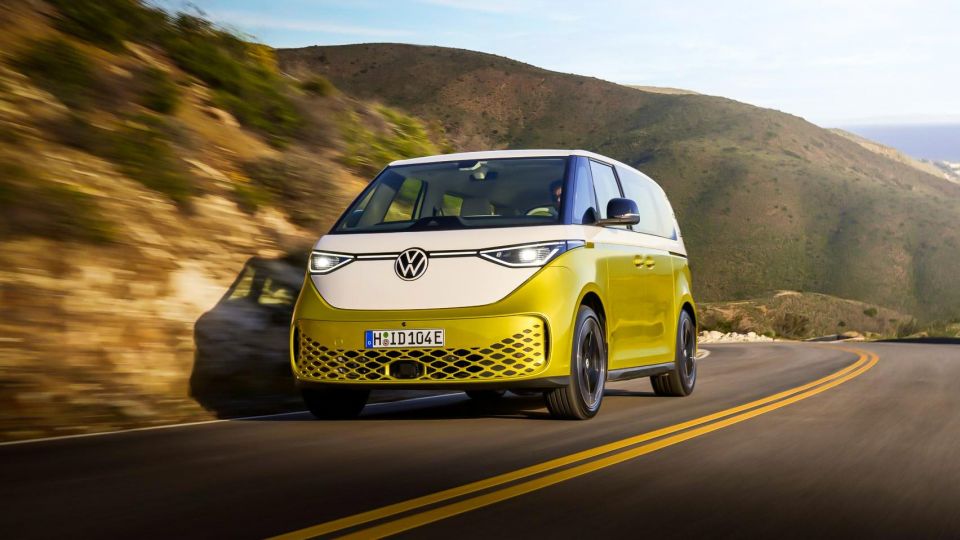
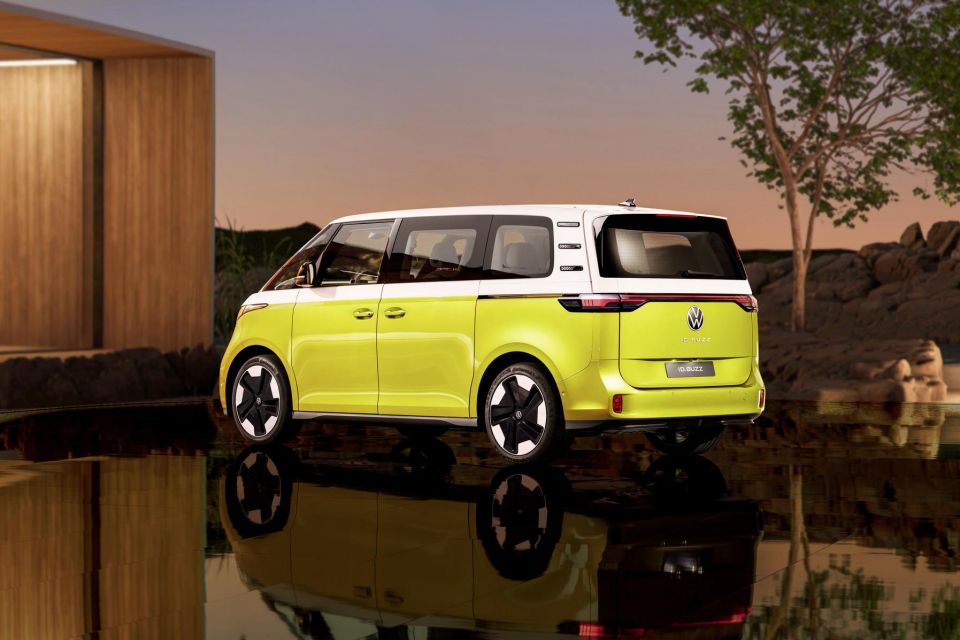

Founder

Founder


Founder

Founder
Where expert car reviews meet expert car buying – CarExpert gives you trusted advice, personalised service and real savings on your next new car.
It’s one of the coolest looking electric vehicles to launch in recent times, and the good news is it’s coming to Australia in late 2024.
This is the fully electric 2024 Volkswagen ID.Buzz – a van and people mover that Volkswagen has crafted off its electric passenger car platform.
It’ll be offered globally in both short- and long-wheelbase versions, as well as two- and three-row configurations or a full commercial van setup.
We had the chance to drive the ID.Buzz, along with the ID.3 and ID.5 across a number of German and Austrian roads – even a short derestricted Autobahn stint.
Pricing for the ID.Buzz hasn’t been confirmed yet for the Australian market. Volkswagen will open expressions of interest from October in Australia, with first deliveries expected just prior to the end of 2024.

The short wheelbase ID.Buzz kicks off at around $90,000 in Europe. The long-wheelbase, three row-version is expected to tip the scales at around $100,000.
The cargo van version could squeeze in beneath the short-wheelbase passenger version depending on the specification Volkswagen opts for Australia.
It may sound like a big chunk of cash, but it’s worth considering vehicles like the Mercedes-Benz EQV are priced from $155,000 before on-road costs.
Buy your new car without the stress. It's fast, simple and completely free.

Great service from Travis and team, second time I have used this business would not hesitate to recommend them to anyone
Craig C.
Purchased a Ford Ranger in Sunshine Coast, QLD
CarExpert helped Craig save thousands on his Ford Ranger, now let us save you on your next new car.
Find a dealThe ID.Buzz feels like a much newer interpretation of Volkswagen’s electric vehicle strategy. It feels a bit more cohesive than the ID.3 and ID.5.

For example, there are charging points and a phone holder integrated into the dashboard, a retractable holder for drinks and an expansive dashboard for storing papers.
There are also a litany of interior and exterior colour combinations to pick from, giving this huge scope for customisability, so it’s a win on all those fronts.
We have the same complaints as the ID.3 and ID.5 about things like the haptic steering controls and touch controls for the infotainment system, which require a slide or a tap of a panel to adjust things like volume and cabin temperature.
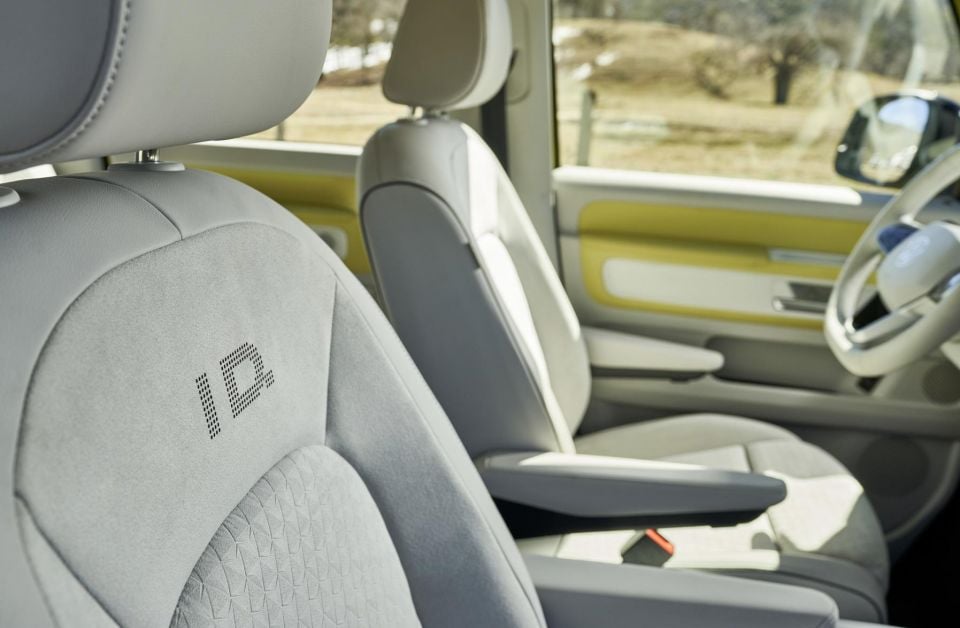

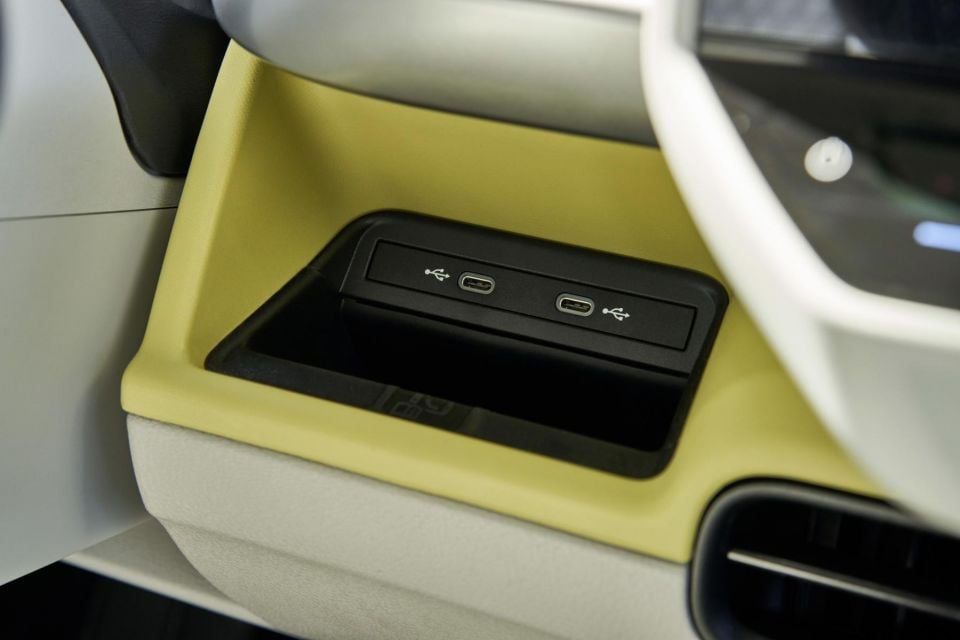
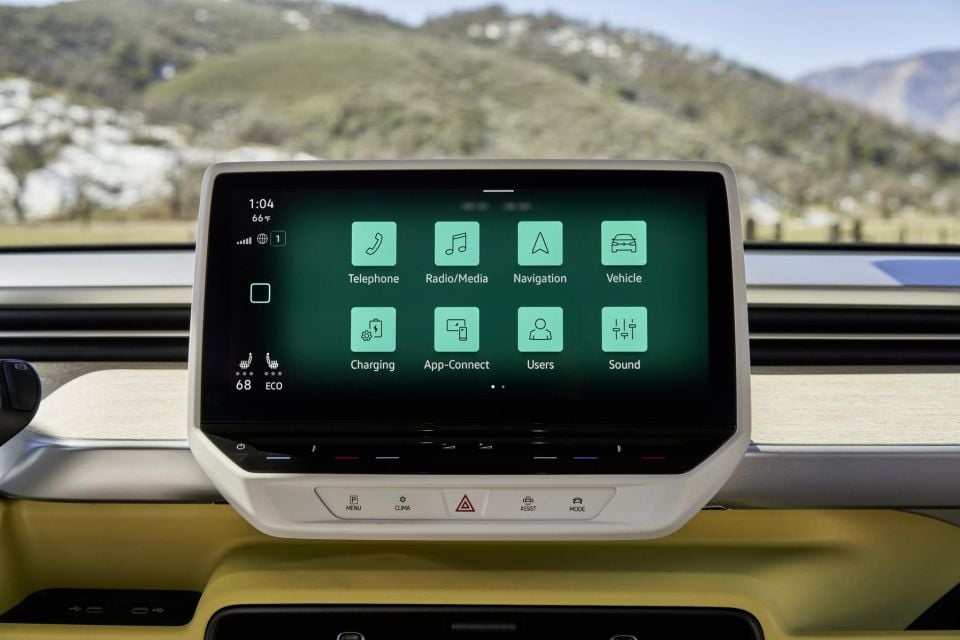
But things like a screen ahead of the driver are welcome (it makes visibility of speed, range and battery charge easy).
The entire centre console can be removed from the car to allow easy access to the second row from the front row. But, while in place it provides a massive storage cavity and even doubles as a storage bin for second-row passengers. It feels like a super friendly-family vehicle.
Moving into the second row you’ll find plenty of leg and head room, along with electric sliding doors for easier access.
The dimensions of the rear mean both the ID.Buzz and ID.Buzz Cargo offer a decent amount of storage. With the second row in place, there’s 1121 litres of cargo capacity.

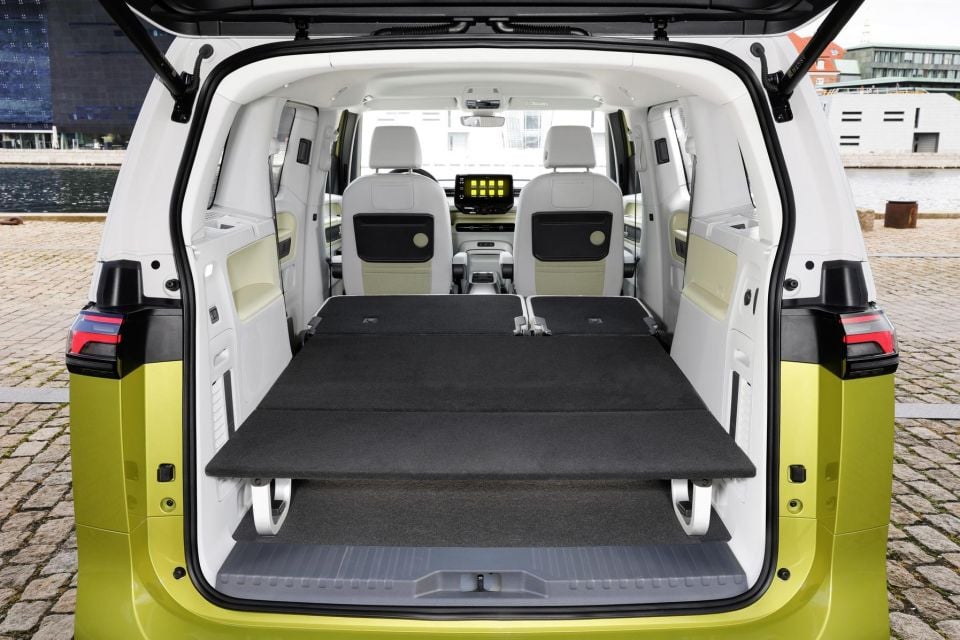
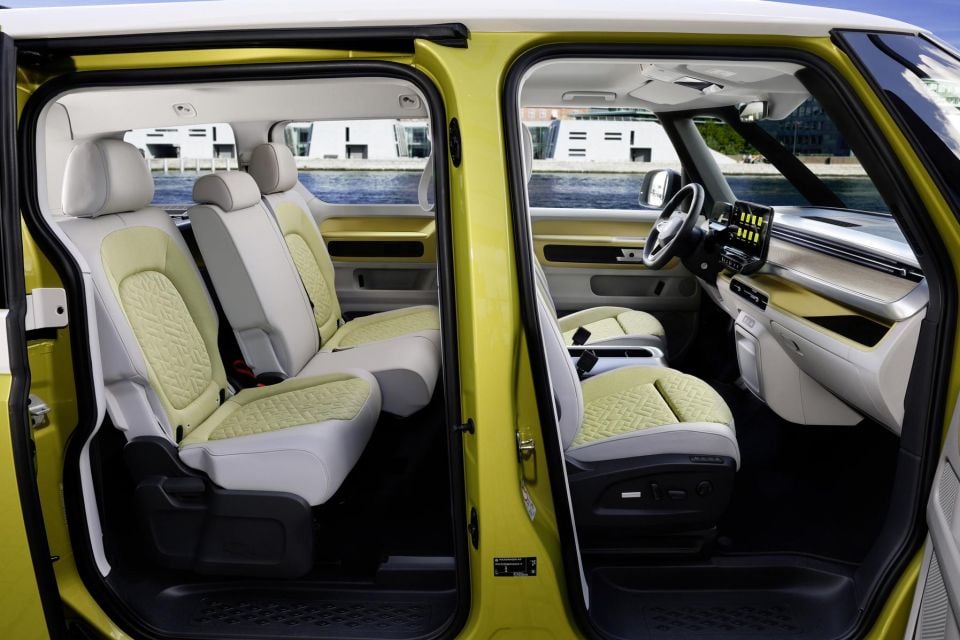
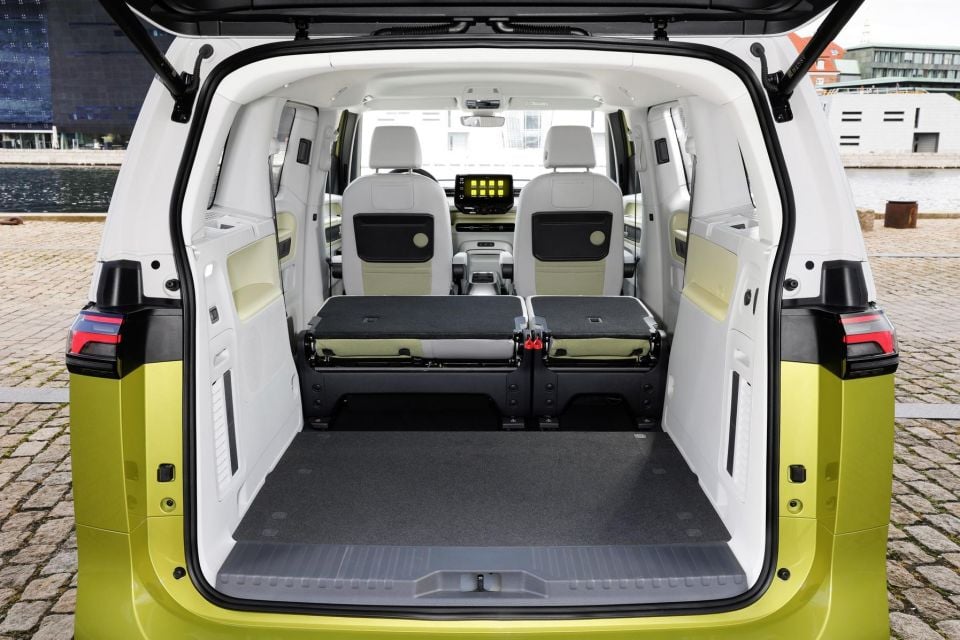
With the second row folded that space expands to 2205 litres – but it’s worth keeping in mind the second row can’t completely fold out of the way, so it’ll always be in the way for longer items.
The long-wheelbase version of the ID.Buzz increases that space by offering 306 litres of cargo space behind the third row, 1340 litres with the second row in place, but the third row folded. Finally folding the third and second row increases space to 2469 litres.
We understand Volkswagen is in the process of tweaking the motors that are available across its electric vehicles. We’re not entirely sure what we will end up with in Australia – given the ID.Buzz’s arrival is still at least a year away.
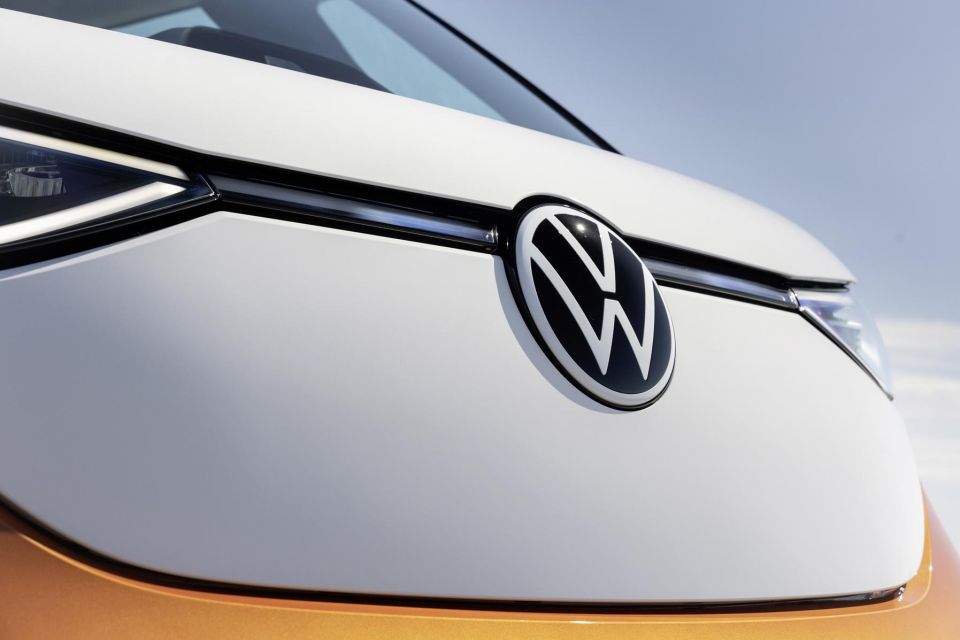
So we’ll focus on what we drove and how that performed.
The ID.Buzz Pro SWB uses a single electric motor on the rear axle. It produces 150kW of power and 310Nm of torque. It’s mated to a 77kWh (usable) lithium ion battery that’s capable of being charged with three-phase AC up to 11kW or at a rate of up to 170kW on DC.
It uses a combined 21.7kWh per 100km on the combined cycle and it’ll go from 0-100km/h in a leisurely 10.2 seconds. Driving range comes in at 423km on the WLTP cycle.
Part of the reason it’s on the inefficient size is its coefficient of drag – .285 (which compares to something like .26 for the ID.5 or .23 for the Tesla Model Y) – and its weight, some 2471kg unladen.
I was pretty excited to drive the ID.Buzz. Given it looks cool, I was hoping it’d feel the same to drive.
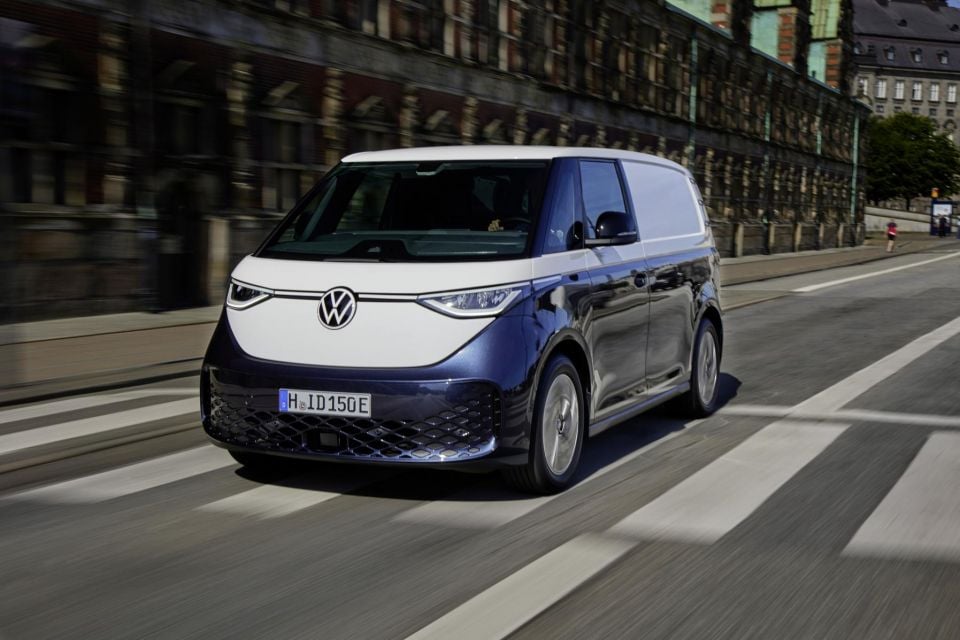
One of the first things I noticed was the road noise. Where the ID.3 and ID.5 were incredibly quiet compared to other similarly sized electric vehicles, the ID.Buzz has a lot of road noise and didn’t feel anywhere near as serene.
It also wasn’t anywhere near as punchy as its smaller stablemates. With a 0-100km/h time of over 10 seconds, it felt positively slow in comparison, especially for an electric vehicle – EVs typically feel punchy behind the wheel.
It moves off the line in a spritely fashion, but once it gets to around 60km/h all of the fun tapers away.
But, if you put those negatives to one side, it’s actually quite fun to drive. The steering feels fairly direct and despite how big it appears from the outside, it doesn’t feel enormous behind the wheel.
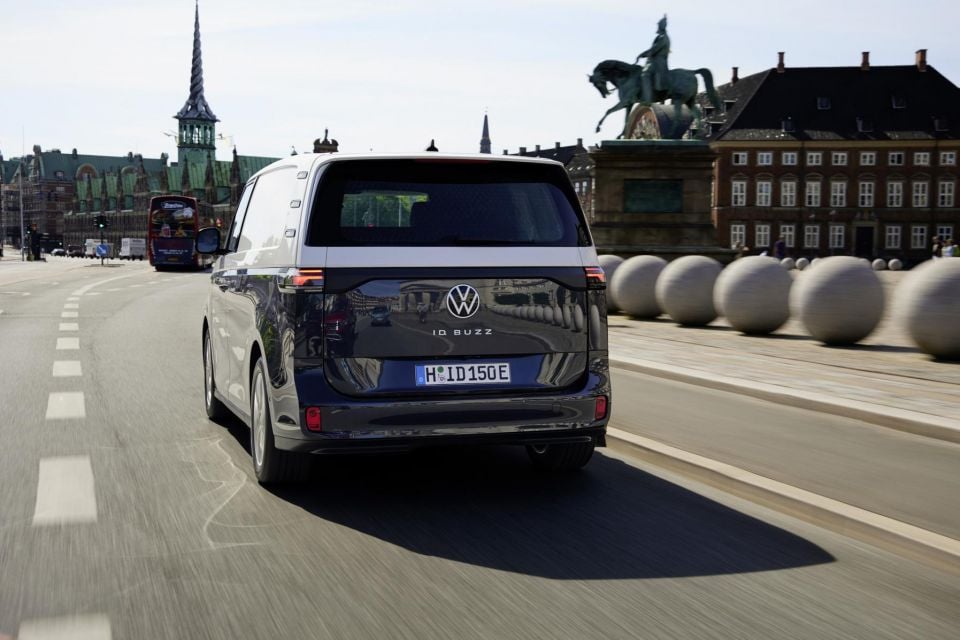
You sit fairly high up, and the massive glasshouse gives you excellent vision out the sides and rear of the vehicle.
If you find yourself on a mountain pass (like we did) it’s also pretty entertaining to throw around. Far more exciting than a van should be – think slow car driven fast, rather than fast car driven fast.
Like the ID.3 and ID.5 there’s no single-pedal drive mode. Instead you’re limited to just using the ‘B’ mode, which increases the level of regen, but not by enough of a margin to rely on it to bring the vehicle to a full stop.
Our stint on the Autobahn was fun – but ultimately it’s not the most entertaining car to drive at its VMax of 145km/h.
It’s worth calling out as well that this trend of heavy electric vehicles designed to move people isn’t new and the ID.Buzz isn’t the only one out there that’s on the porky side.


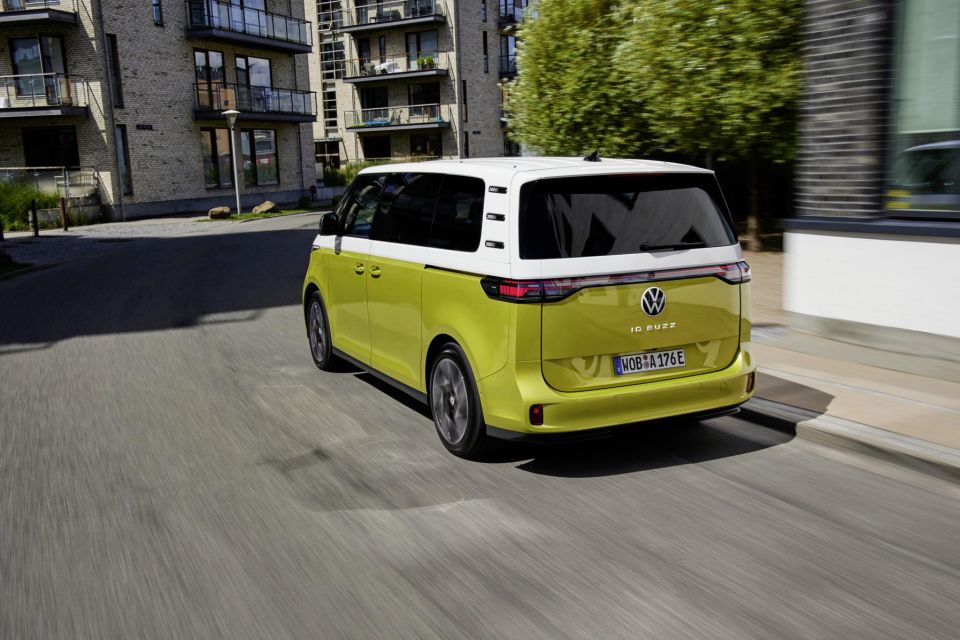
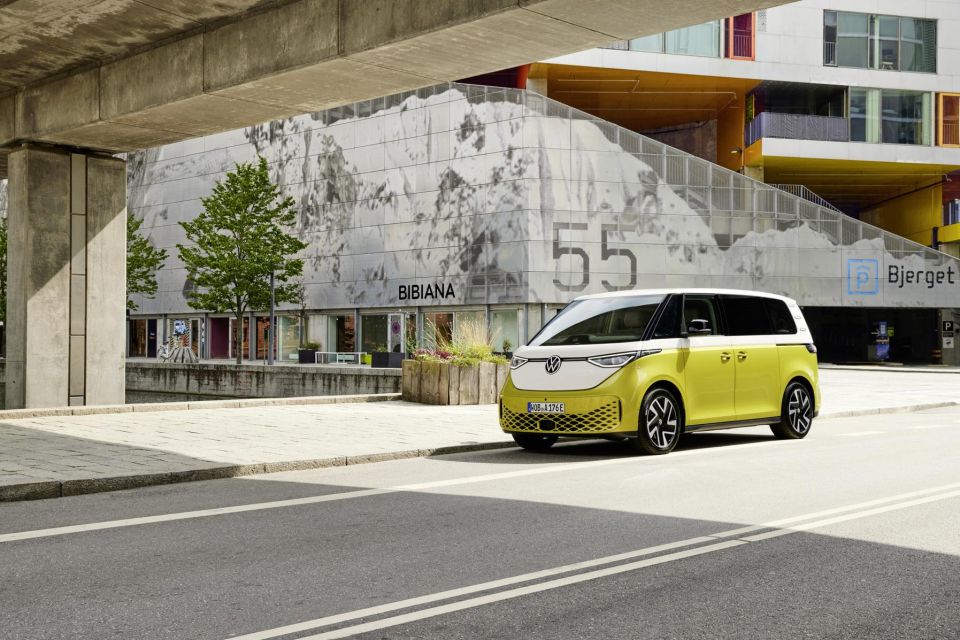
Find yourself in a Mercedes-Benz EQS SUV and it tips the scales at an enormous 2800kg (or thereabouts). Same story with the similar EQV, which comes in at just over 2800kg.
These big weight figures are here to stay until battery technology evolves and allows for better energy density.
It’s also the reason you can’t get a three-row version of the smaller ID.Buzz. It has a GVM of 3000kg, meaning there’s just 529kg available as payload – that’s five passengers with an average weight of 80kg, plus some luggage. A third row would most likely have this over its GVM pretty quickly.
The ID.Buzz wears a five-star Euro NCAP safety rating, though this is yet to be carried over to ANCAP.
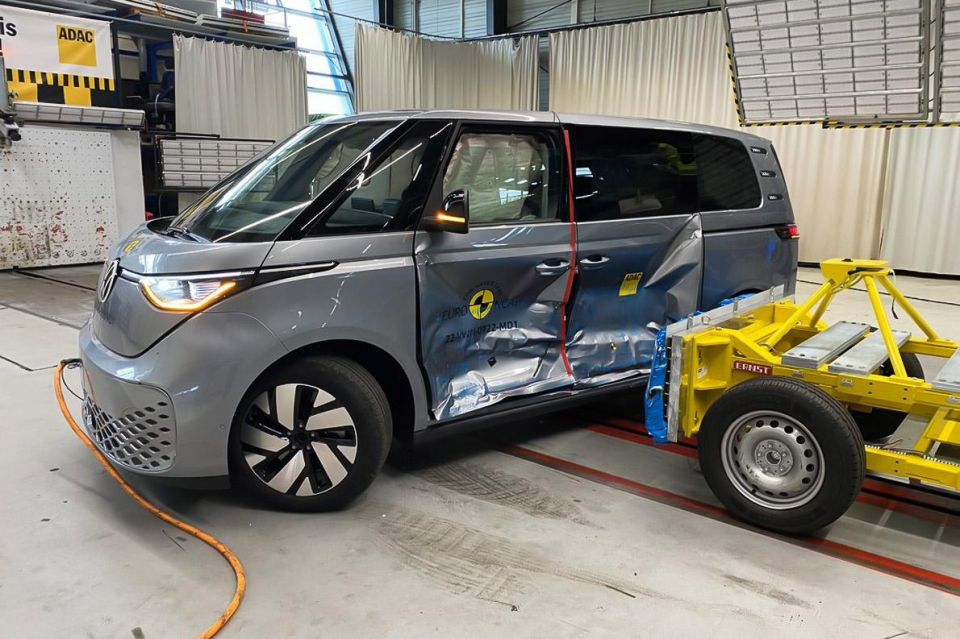
It managed a 92 per cent adult occupant rating, an 87 per cent child occupant rating, a 60 per cent vulnerable road user rating and a 90 per cent safety assist score.
Standard safety kit includes autonomous emergency braking with pedestrian and cyclist detection, radar cruise control, lane keeping assistant and rear cross-traffic alert.
There’s no denying this is one of the cooler vehicle launches in recent years. It harks back to the original Kombi beautifully with a modern electric twist.
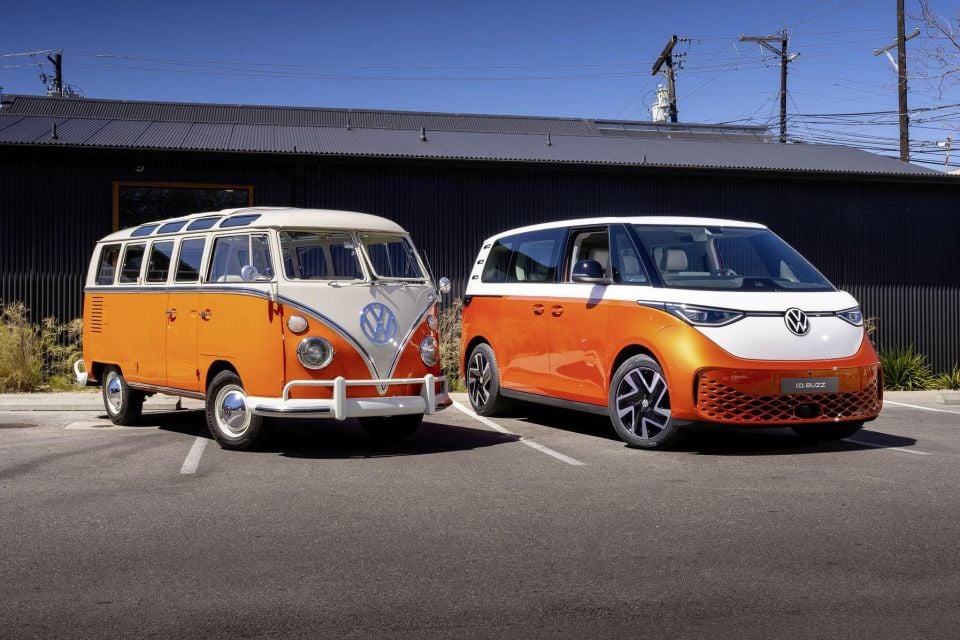
It’s a theme Volkswagen will follow with its future electric vehicles, leaning on historic nameplates and themes to make modern iterations more relevant with nostalgic buyers.
How will this work in Australia? At around the $100,000 mark, it’s an expensive ask for the average family. It’s likely to be purchased by those with enough spare cash to possibly also be running an internal combustion vehicle to offset the range you’re likely to get when this is fully loaded with kids and their things.
Either way, it’s an exciting step forward and we’re looking forward to seeing them hit the roads in late 2024.

Click the images for the full gallery
Where expert car reviews meet expert car buying – CarExpert gives you trusted advice, personalised service and real savings on your next new car.
Paul Maric is a CarExpert co-founder and YouTube host, combining engineering expertise with two decades in automotive journalism.


Max Davies
14 Hours Ago


William Stopford
14 Hours Ago


Derek Fung
15 Hours Ago


Max Davies
22 Hours Ago


William Stopford
2 Days Ago


Ben Zachariah
2 Days Ago